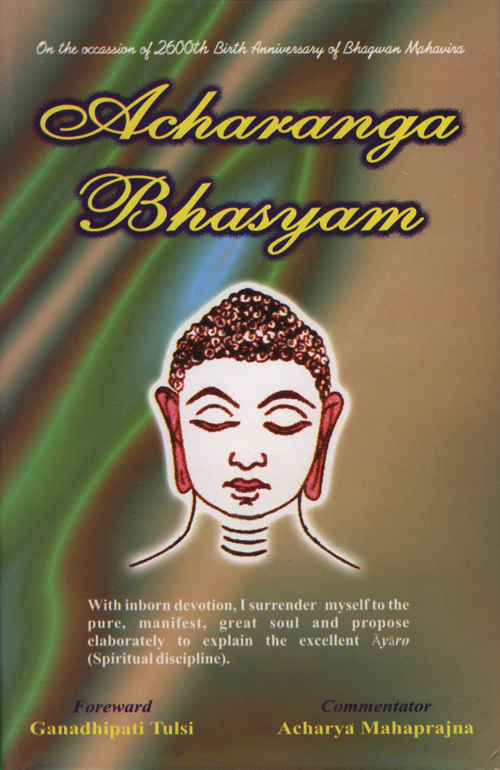The 12 Āgamas compiled in the Dvādasāṅgi are known as Aṅga literature. The word Aṅga is common to both Sanskrit as well as Prakrit. In the Vedic literature the supplementary literature for study of Vedas is termed as Vedāṅga. They are 6 as follows:
- Sikṣā (the science of proper articulation and pronunciation).
- Kalpa (the systematic work that lays down the rituals and prescribes rules for ceremonial and sacrificial acts)
- Vyākarṇa (grammar)
- Nirukta (etymological meaning of verses)
- Chaṅda (the science of prosody)
- Jyotiṣa (the work of astronomy for determining auspicious time for yajñas)
Veda-Puruṣa is the personification of Vaidika literature.The six Aṅga, as above, have been termed as the limbs of the veda-puruṣa.[1] The word Aṅga has also been used in Pālῑ literature - The preachings by Buddha have been called Navāṅga and Dvādasāṅga at different places.
Navāṅga
The Navāṅga consists of—
- Sutta (teachings of Buddha in prose).
- Jñeyya (in mixed form with prose and poetry)
- Veyyākarṇa (commentaries)
- Gāthā (poetic form)
- Udāna (the emotive experiences of Buddha)
- Itivuttaka (short comments attributed to Buddha)
- Jātaka (stories related to earlier lives of Buddha)
- Abbhutadhamma (mystical expressions)
- Vedalla (teachings available in question-answer form)[2]
(i) sūtra (ii) jñeya (iii) vyākaraṇa (iv) gāthā (v) udāna (vi) avadāna (vii) itivṛttaka (viii) nidāna (ix) vaipulya (x) jātaka (xi) upadeśa dharma (xii) adbhutadharma.[3]
The Jaina Aṅga Āgama is divided into 12 parts—
(i) ācāra (ii) sūtrakṛta (iii) sthāna (iv) samavāya (v) bhagavatῑ (vi) jñātādharmakathā (vii) upāsakadaśā (viii) anākṛtadaśā (ix) anuttaropapātika (x) praśnavyākaraṇa (xi) vipāka (xii) dṛṣṭivāda.
As said earlier, the word Aṅga has been used in all the three main streams of Indian Philosophy. In the Vaidika and Bauddha literature, the main treatises are 'Veda' and 'Pitaka'. The word Aṅga is not associated with them. In the Jaina literature, the main works are catagorized as 'Gaṇipiṭaka' which has been associated with the Aṅga e.g. Gaṇipiṭaka has 12 Aṅgas (Dvādasāṅgi Gaṇipiṭaka).[4]
The personification of 'śruta-puruṣa' is also there in Jaina literature. Ācāra and 12 Āgamas are the limbs of 'śruta-puruṣa'. The adjective Dvādasāṅga [5] therefore, qualifies both 'Gaṇipiṭaka' and 'śruta-puruṣa'.
 Acharya Mahaprajna
Acharya Mahaprajna

